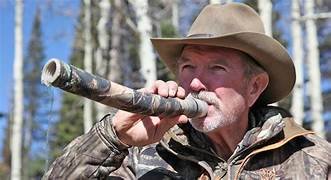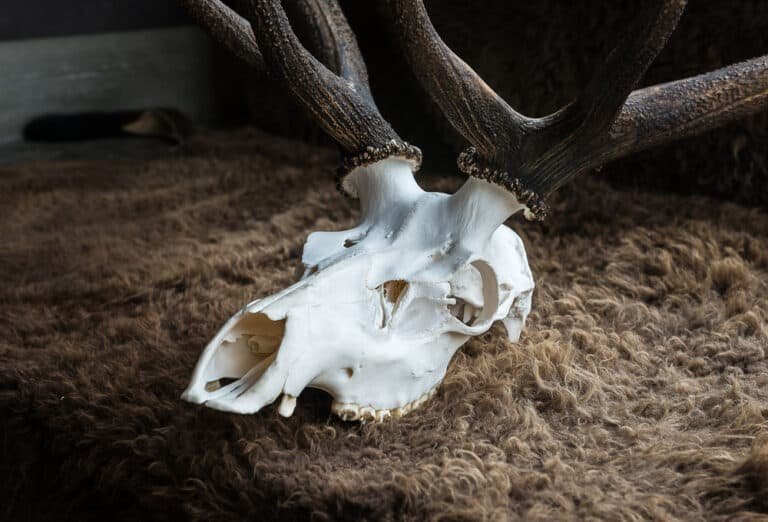New Mexico Elk Hunting: 3 Amazing Tips for Navigating the Land
With its vast and varied landscape, New Mexico Elk Hunting is a haven for outdoor enthusiasts and nature lovers. From the rugged mountains to the sprawling deserts, this southwestern state offers a diverse range of ecosystems supporting many wildlife. Among these magnificent creatures is the majestic elk, which has captured the hearts of hunters and adventurers for generations.
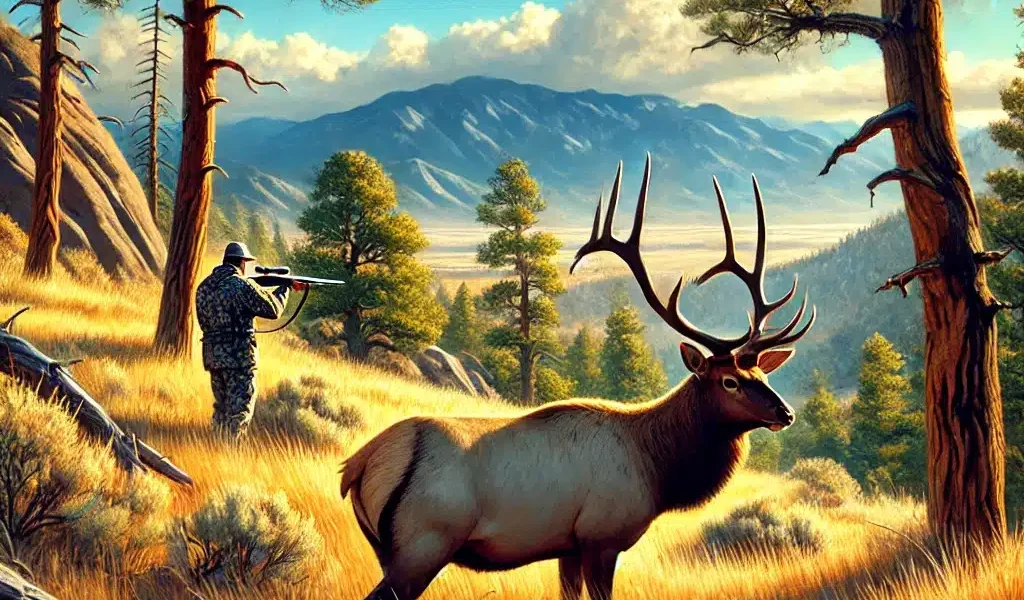
New Mexico boasts a geographical tapestry encompassing towering peaks, deep canyons, lush forests, and arid plains. The Sangre de Cristo Mountains carve their way across the northern portion of the state, while the Gila National Forest showcases its rugged beauty in the southwest.
Breathtaking landscapes such as the Rio Grande Valley and the iconic White Sands National Park lie in between. This diverse terrain gives rise to many wildlife that call New Mexico home.
From bighorn sheep to black bears, mountain lions to pronghorn antelope – these creatures thrive in their respective habitats across the state. Moreover, New Mexico’s commitment to conservation has allowed populations to flourish, making it an ideal destination for wildlife enthusiasts.
Elk Hunting as a Popular Outdoor Activity in the State
Elk hunting has long been revered as an exhilarating pursuit in New Mexico. Drawing thousands of avid hunters each year from all corners of the country, this activity provides an opportunity for adventure and a chance to immerse oneself in nature’s grandeur. The allure of hunting elk lies not only in its challenging nature but also in its significance as a time-honored tradition rooted deeply within American folklore.
Pursuing requires skillful tactics and intimate knowledge of these magnificent animals’ behavior patterns. This blend of raw intensity and reverence for nature entices hunters from far and wide.
In addition to being a thrilling sport, elk hunting contributes to wildlife management and conservation efforts. Through carefully regulated hunting seasons and responsible practices, hunters help maintain the delicate balance of elk populations, ensuring the health and sustainability of these remarkable creatures for generations to come.
As we explore New Mexico’s elk hunting, we will delve into the intricacies of this awe-inspiring pursuit. From understanding elk behavior to choosing the right gear and strategies for success, we shall equip you with all necessary to embark on your memorable elk hunting adventure in the Land of Enchantment.
Rocky Mountain elk species found in New Mexico

The Rocky Mountain elk is the primary subspecies found in New Mexico. These majestic creatures are known for their impressive size and striking appearance. Adult males, also known as bulls, can weigh up to 700 pounds and stand around five feet tall at the shoulder. Their antlers, shed annually and then regrown, can reach lengths of up to four feet.
The coat of a Rocky Mountain elk varies with the seasons. In summer, their coat is reddish-brown with a light tan rump patch and a creamy-colored neck mane. The coat darkens to a grayish-brown hue as winter sets in to provide better camouflage against snowy landscapes. Both males and females possess a light-colored rump patch bordered by dark fur.
Elk Behaviors
Rocky Mountain elk in New Mexico prefers diverse habitats with ample food sources such as grasses, shrubs, and tree bark. They inhabit areas ranging from ponderosa pine forests to high-elevation meadows and alpine tundra above the treeline. Elk are primarily crepuscular animals and are most active during dawn and dusk.
During these times, they graze on nutritious vegetation while remaining vigilant for potential predators. As highly social animals, elks form large herds of females (cows) and their offspring (calves).
Bulls generally form smaller bachelor groups outside the breeding season but join the herds during mating season or “rut,” which occurs in late summer or early fall. Elk herds exhibit migratory behavior within New Mexico due to seasonal changes in food availability and weather conditions.
In higher elevations during summer, when food is abundant at higher altitudes, they move towards alpine meadows. As winter approaches, they migrate to lower elevations where snowfall is less severe, ensuring access to forage.
Elk Conservation
Elk conservation efforts in New Mexico are crucial in maintaining healthy ecosystems and preserving this iconic species for future generations. The state’s wildlife management agencies implement various measures to balance the elk population, protect their habitats, and sustainably regulate hunting. Conservation programs focus on monitoring elk populations through scientific surveys and research.
These initiatives help determine optimal hunting quotas, prevent overpopulation, and prevent habitat destruction caused by excessive browsing or trampling. Additionally, conserving elk contributes to the overall biodiversity of New Mexico’s ecosystems.
Elk are a keystone species due to their significant impact on vegetation dynamics. Their grazing habits help shape landscapes by controlling plant growth and promoting biodiversity among native plants while providing food sources for numerous other wildlife species.
Moreover, elk also generate significant economic benefits for local communities through hunting tourism. Responsible management ensures sustainable utilization while supporting rural economies that rely on recreational activities associated with elk hunting.
Understanding the Rocky Mountain elk’s characteristics, habitat preferences, behavior patterns, and migration habits is essential for effective management and conservation efforts in New Mexico. The continued preservation of this majestic species ensures balanced ecosystems and maintains the state’s cultural heritage associated with elk hunting.
Hunting Seasons and Regulations
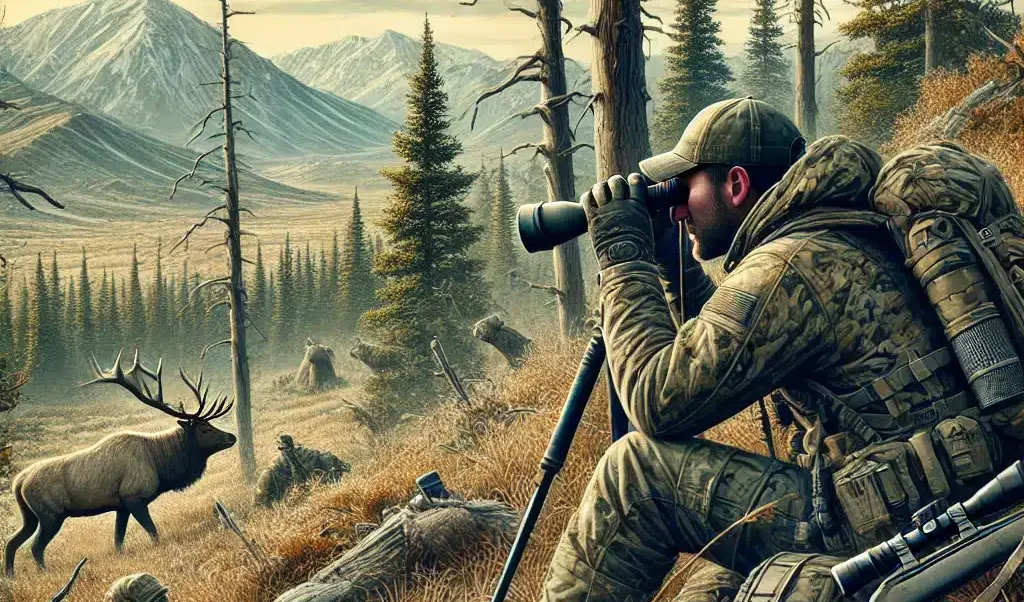
Elk hunting in New Mexico presents a unique opportunity for both residents and non-residents to experience the thrill of pursuing these majestic creatures. The state offers different hunting seasons tailored to various methods, ensuring hunters can choose the one that aligns with their preferences and skill level.
Archery Hunts
The archery season for elk in New Mexico typically begins in early September and extends into early October. Archery hunts provide an exceptional challenge as hunters rely on their stealth, accurate shooting, and strategic positioning to get within range of an elk. Compound bows, traditional bows, or crossbows are permitted during this season, allowing hunters to showcase their skills with their preferred archery equipment.
Muzzleloader Hunts
New Mexico also offers muzzleloader hunts specifically designed for those who appreciate the historical aspects of hunting. These hunts typically occur after the archery season ends, around mid-October.
Muzzleloaders are firearms where the propellant charge is loaded through the muzzle (the open end of the gun’s barrel) rather than being loaded from a cartridge or shell. This traditional method adds extra challenge and excitement to elk hunting.
Rifle Hunts
Many hunters highly anticipate the rifle season for elk in New Mexico due to its accessibility and effectiveness in harvesting game. Typically starting in late October or early November, rifle hunts cover a broader timeframe than archery or muzzleloader seasons. This allows hunters more flexibility while pursuing elusive bulls or cows using modern firearms such as bolt-action rifles with cartridges suitable for big game hunting.
Application Process for Elk Hunting License or Tag
To partake in elk hunting in New Mexico, obtaining an appropriate license or tag through an application process is essential. The New Mexico Department of Game and Fish handles these applications, ensuring fair and controlled access to hunt elk. The process involves several key steps that aspiring hunters must follow:
Application Period
The application period for elk hunting licenses usually opens in the early months of the year, often in January or February, and remains open for a limited time. Staying updated with the department’s announcements and deadlines is crucial to ensure timely submission.
Draw System
New Mexico employs a draw system for allocating hunting licenses or tags. This means interested hunters must submit their applications within the specified timeframe and await the results of a lottery-style drawing. The number of available licenses is limited, adding anticipation and excitement to the application process.
Preference Points
In New Mexico’s draw system, preference points significantly increase one’s chances of obtaining a license. Hunters who do not draw their desired license accrue preference points for future applications, improving their odds over time by accumulating more points.
Detailed Explanation of Regulations

Bag Limits
New Mexico sets specific bag limits for elk hunting to ensure responsible management and population control while maintaining sustainable wildlife populations. Typically, each hunter can harvest one bull elk per season unless specified by specific hunt units or special permits.
Weapon Restrictions
The state has regulations regarding weapon restrictions during different seasons or hunt units. For example, archery hunts typically restrict hunters from using electronic devices to call or locate game animals during designated periods.
Hunting Zones
New Mexico is divided into different hunting zones called “game management units” (GMUs), each with specific regulations and characteristics. These GMUs help manage elk populations effectively and ensure sustainable hunting practices. Familiarizing oneself with the specific regulations and boundaries of the intended hunting zone is vital to remain compliant with state laws.
Choosing the Right Hunting Area

Exploring New Mexico’s Elk Populated Regions
New Mexico has a diverse landscape, offering various regions home to significant elk populations. From the rugged mountains of the Sangre de Cristo Range to the vast expanses of the Gila National Forest, each region presents unique opportunities for elk hunting enthusiasts. The Carson National Forest in northern New Mexico is renowned for its abundance of elk, particularly in units 51 and 52.
These areas boast vast wilderness and dense timber stands, providing excellent habitats for these majestic creatures. Moving towards central New Mexico, hunters can explore units 13 and 17 within the Cibola National Forest, where sprawling meadows intermingle with ponderosa pine forests, creating prime feeding grounds for elk herds.
Finding the Perfect Fit: Factors to Consider
Several crucial factors should be considered when selecting a hunting area in New Mexico. The terrain is vital as it determines how challenging your hunt will be.
Steep mountainsides may require greater physical endurance, while flatter areas offer easier tracking opportunities. Accessibility is another essential consideration; some areas may necessitate hiking deep into remote locations or utilizing horseback or off-road vehicles to transport your gear effectively.
Moreover, success rates should also guide your decision-making when choosing a hunting area. Researching historical data on elk population density and harvest success rates can help identify regions with higher chances of encountering trophy bulls or securing cow hunts based on personal preference.
Unveiling Prime Hunting Units
While numerous outstanding units exist throughout New Mexico, a few stand out as exceptional options for trophy bull hunts and cow hunts. Unit 16A in the Gila National Forest is renowned amongst seasoned hunters due to its challenging terrain and secluded nature that attracts large bull elk.
Hunters can succeed in this rugged wilderness with careful planning and determination. Additionally, Unit 34 in the Carson National Forest is a hotspot for cow hunts, offering ample opportunities to fill the freezer while enjoying this area’s stunning landscapes.
Remember that each unit holds its unique characteristics and regulations; it is essential to thoroughly research and understand the specific rules and restrictions associated with your chosen hunting area before embarking on your adventure. By considering factors such as terrain, accessibility, and success rates and honing in on specific hunting units with exceptional opportunities, you can increase your chances of a fruitful and unforgettable elk hunting experience in New Mexico.
Tactics and Strategies for Elk Hunting Success
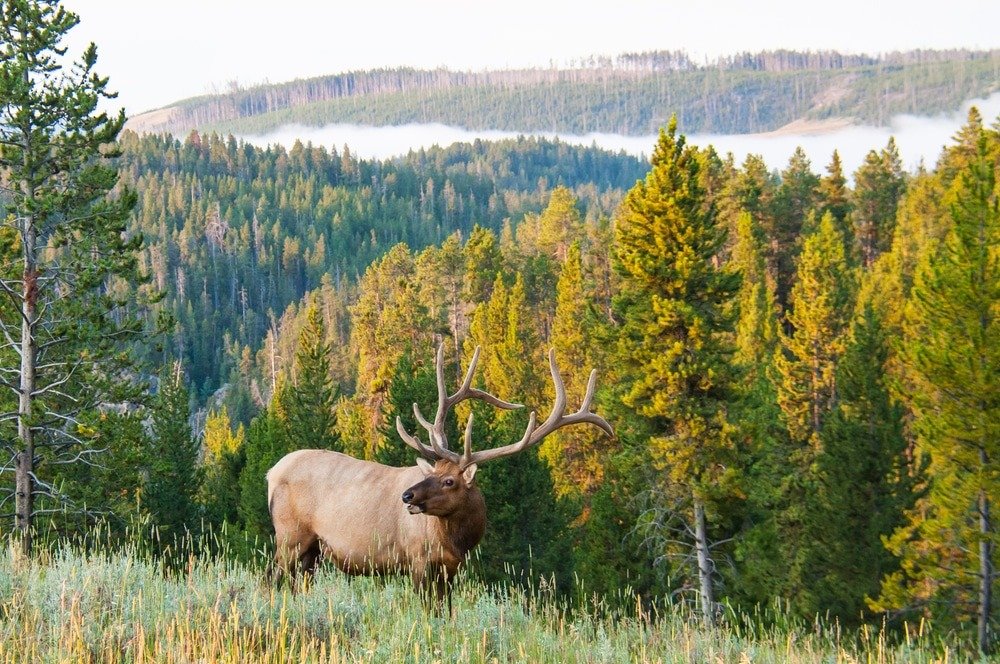
Skills Required
Elk hunting requires skill, patience, and knowledge of effective techniques to increase the chances of a successful hunt. Spot-and-stalk is a popular method where hunters scout for elk from vantage points or glassing spots and carefully stalk their prey on foot.
This approach requires stealthy movement and the ability to read elk behavior to close in for a shot within an optimal range. Calling is another widely used technique that mimics elk vocalizations, such as bugles or cow calls, to attract bulls or locate herds.
Successful callers utilize different tones and sequences to communicate with bulls during the rutting season. Ambush tactics involve identifying key areas like water sources or feeding grounds where elk are likely to frequent, setting up blinds or tree stands, and patiently waiting for an opportunity to take a shot.
Preseason Scouting
Effective scouting is crucial for successful elk hunting as it helps hunters identify prime habitats where these majestic animals reside. Before the season begins, it’s essential to study maps highlighting topographical features such as ridges, valleys, and drainages that can concentrate elk movement.
Conducting pre-season surveys allows hunters to locate key indicators like game trails, rubs on trees caused by bull elk marking their territory, wallows used for rolling in mud during rutting season, or feeding areas filled with fresh browse.
Utilizing trail cameras can also provide valuable information about herd movements and patterns in specific areas. Talking with local wildlife biologists or experienced hunters can also offer insights into recent sightings or known migration routes.
Understanding Elk Vocalizations
Elk are highly vocal animals; understanding their vocalizations is essential for a successful hunt. Bulls produce bulges that can be heard from miles away during the rut. These bulges serve multiple purposes, such as attracting cows, intimidating rivals, or asserting dominance over a territory.
By studying different bugle tones and their meaning, hunters can gauge a bull’s age, size, and mood to assess its desirability as a target. Cow calls are also crucial for locating herds or enticing bulls.
Mews and estrus calls are hunters’ most common cow sounds to lure bulls closer. It is important to practice these vocalizations before hunting season begins to achieve realistic and convincing calls.
Additionally, understanding the timing of elk vocalizations throughout the day will help hunters match their strategies accordingly. By employing these techniques and tactics while thoroughly scouting prime elk habitats before the season commences, hunters can significantly increase their chances of success in New Mexico’s challenging elk hunting landscape.
Gear Essentials for Elk Hunting

Firearms or Archery Equipment Suitable for Elk Hunting
When it comes to elk hunting, choosing the right weapon is crucial. A high-powered rifle with sufficient stopping power and accuracy is recommended for firearms.
Choose calibers like .270 Winchester, .30-06 Springfield, or even larger ones like 7mm Remington Magnum or .300 Winchester Magnum. Ensure you are comfortable and proficient with your firearm before heading into the field.
If you prefer archery, a compound bow with a draw weight of 60-70 pounds is ideal for effectively taking down elk. Practicing consistently and becoming proficient in accuracy and shot placement is essential.
Selecting Appropriate Clothing
Elk hunting often occurs in rugged terrain with unpredictable weather patterns, so dressing appropriately is paramount. Layering your clothing allows for easy adjustments to climate fluctuations throughout the day.
Start with a moisture-wicking base layer made of materials like merino wool or synthetic fabrics to keep you dry while managing sweat. Over this, add an insulating mid-layer such as fleece or down to provide warmth without excessive bulk.
Wear a waterproof and breathable outer shell jacket and pants as protection against rain, snow, wind, and damp vegetation. Don’t forget about accessories like gloves, hats or beanies, neck gaiters, or buffs – all of which can help regulate body temperature and provide additional comfort during long hours in the field.
Recommendations on Necessary Camping Gear
For extended elk hunts that require overnight stays in the mountains or remote areas where amenities are scarce, having proper camping gear and backpacking essentials becomes vital. A sturdy tent capable of withstanding challenging weather conditions should be lightweight yet durable enough to ensure a comfortable sleep.
A reliable sleeping bag suitable for cold temperatures is also essential for restful nights. Other essentials include a camping stove and fuel for cooking meals, a water filtration system or purifying tablets, durable backpacks to carry your gear efficiently, trekking poles for stability on uneven terrain, and high-quality lightweight camping cookware.
Packing enough food and water supplies to last you throughout your hunting trip while also considering the weight restrictions of long hikes is crucial. By carefully selecting the right gear – be it firearms or archery equipment suited for elk hunting, appropriate clothing layers to withstand varying weather conditions, or necessary camping gear and backpacking essentials – hunters can significantly enhance their chances of success while ensuring comfort and safety during their time in New Mexico’s stunning wilderness.
Accommodations
When planning an elk hunting trip in New Mexico, it is essential to consider suitable accommodations that provide comfort and convenience during your stay. The state offers a range of options catering to different preferences and budgets.
For those seeking a rustic outdoor experience, numerous campgrounds and RV parks are near popular hunting areas. These facilities typically provide basic amenities such as restrooms, showers, and fire pits.
Alternatively, suppose you prefer a more luxurious stay after a long day in the field. In that case, New Mexico also boasts several lodges and resorts that offer comfortable accommodations with modern conveniences like hot tubs, Wi-Fi access, and dining services. Additionally, local outfitters often provide guided hunting trips with lodging included in their package deal.
Conclusion
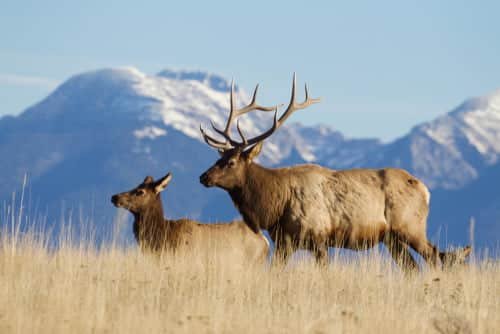
Elk hunting in New Mexico is not merely an outdoor pursuit but an immersive experience that allows hunters to connect with nature’s grandeur while pursuing majestic game species. With its diverse landscape, rich wildlife populations, well-managed hunting seasons, and extensive public lands open for access, New Mexico presents an exceptional opportunity for both novice and seasoned hunters.
Respecting the environment by adhering to all state regulations and practicing ethical hunting principles is crucial. So whether you’re drawn to the adrenaline rush of bugling bull elk or enjoy being immersed in the pristine wilderness, embarking on an elk hunt in New Mexico promises unforgettable moments amidst breathtaking scenery.
As you navigate this extraordinary pursuit of adventure and skillful marksmanship or archery prowess, your journey may be filled with triumphs that deepen your appreciation for nature’s wonders.


